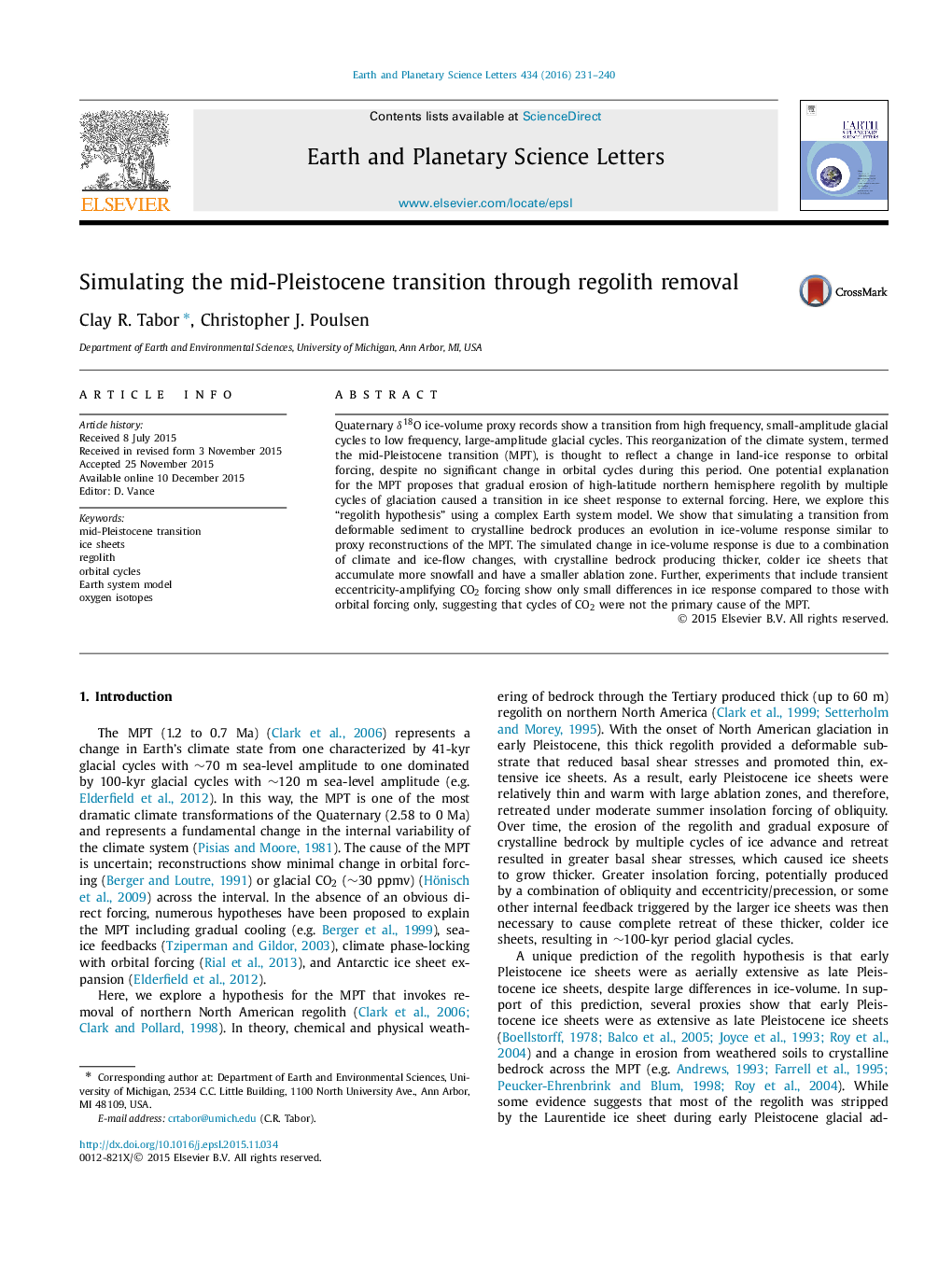| کد مقاله | کد نشریه | سال انتشار | مقاله انگلیسی | نسخه تمام متن |
|---|---|---|---|---|
| 6427742 | 1634722 | 2016 | 10 صفحه PDF | دانلود رایگان |

- We model the North American land ice response to a reduction in regolith.
- Low basal drag produces glacial cycles that are dominated by obliquity.
- Increased basal drag leads to a strong eccentricity signal in ice-volume response.
- CO2 forcing plays a secondary role in modeled ice-volume response.
Quaternary δ18O ice-volume proxy records show a transition from high frequency, small-amplitude glacial cycles to low frequency, large-amplitude glacial cycles. This reorganization of the climate system, termed the mid-Pleistocene transition (MPT), is thought to reflect a change in land-ice response to orbital forcing, despite no significant change in orbital cycles during this period. One potential explanation for the MPT proposes that gradual erosion of high-latitude northern hemisphere regolith by multiple cycles of glaciation caused a transition in ice sheet response to external forcing. Here, we explore this “regolith hypothesis” using a complex Earth system model. We show that simulating a transition from deformable sediment to crystalline bedrock produces an evolution in ice-volume response similar to proxy reconstructions of the MPT. The simulated change in ice-volume response is due to a combination of climate and ice-flow changes, with crystalline bedrock producing thicker, colder ice sheets that accumulate more snowfall and have a smaller ablation zone. Further, experiments that include transient eccentricity-amplifying CO2 forcing show only small differences in ice response compared to those with orbital forcing only, suggesting that cycles of CO2 were not the primary cause of the MPT.
Journal: Earth and Planetary Science Letters - Volume 434, 15 January 2016, Pages 231-240